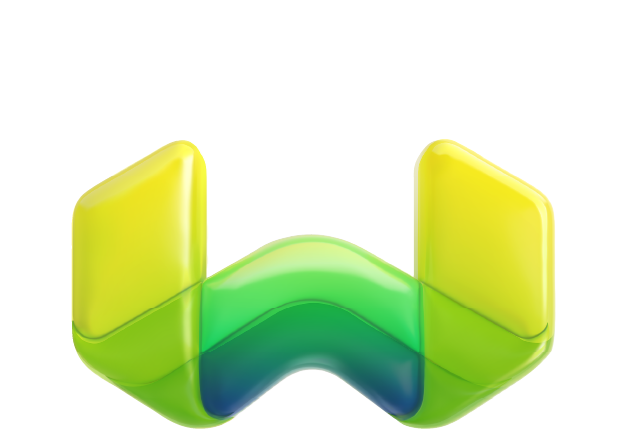Weaviate
Ruby wrapper for the Weaviate.io API.
Part of the Langchain.rb stack.
Installation
Install the gem and add to the application's Gemfile by executing:
$ bundle add weaviate-ruby
If bundler is not being used to manage dependencies, install the gem by executing:
$ gem install weaviate-ruby
Usage
Instantiating API client
require 'weaviate'
client = Weaviate::Client.new(
url: 'https://some-endpoint.weaviate.network', # Replace with your endpoint
api_key: '', # Weaviate API key
model_service: :openai, # Service that will be used to generate vectors. Possible values: :openai, :azure_openai, :cohere, :huggingface, :google_palm
model_service_api_key: 'xxxxxxx' # Either OpenAI, Azure OpenAI, Cohere, Hugging Face or Google PaLM api key
)Using the Schema endpoints
# Creating a new data object class in the schema
client.schema.create(
class_name: 'Question',
description: 'Information from a Jeopardy! question',
properties: [
{
"dataType": ["text"],
"description": "The question",
"name": "question"
}, {
"dataType": ["text"],
"description": "The answer",
"name": "answer"
}, {
"dataType": ["text"],
"description": "The category",
"name": "category"
}
],
# Possible values: 'text2vec-cohere', 'text2vec-openai', 'text2vec-huggingface', 'text2vec-transformers', 'text2vec-contextionary', 'img2vec-neural', 'multi2vec-clip', 'ref2vec-centroid'
vectorizer: "text2vec-openai"
)
# Get a single class from the schema
client.schema.get(class_name: 'Question')
# Get the schema
client.schema.list()
# Remove a class (and all data in the instances) from the schema.
client.schema.delete(class_name: 'Question')
# Update settings of an existing schema class.
# Does not support modifying existing properties.
client.schema.update(
class_name: 'Question',
description: 'Information from a Wheel of Fortune question'
)
# Adding a new property
client.schema.add_property(
class_name: 'Question',
property: {
"dataType": ["boolean"],
"name": "homepage"
}
)
# Inspect the shards of a class
client.schema.shards(class_name: 'Question')Using the Objects endpoint
# Create a new data object.
client.objects.create(
class_name: 'Question',
properties: {
answer: '42',
question: 'What is the meaning of life?',
category: 'philosophy'
}
)
# Lists all data objects in reverse order of creation.
client.objects.list()
# Get a single data object.
client.objects.get(
class_name: "Question",
id: "uuid"
)
# Check if a data object exists.
client.objects.exists?(
class_name: "Question",
id: "uuid"
)
# Delete a single data object from Weaviate.
client.objects.delete(
class_name: "Question",
id: "uuid"
)
# Update a single data object based on its uuid.
client.objects.update(
class_name: "Question",
id: "uuid",
properties: {
question: "What does 6 times 7 equal to?",
category: "math",
answer: "42"
}
)
# Batch create objects
client.objects.batch_create(objects: [
{
class: "Question",
properties: {
answer: "42",
question: "What is the meaning of life?",
category: "philosophy"
}
}, {
class: "Question",
properties: {
answer: "42",
question: "What does 6 times 7 equal to?",
category: "math"
}
}
])
# Batch delete objects
client.objects.batch_delete(
class_name: "Question",
where: {
valueString: "uuid",
operator: "Equal",
path: ["id"]
}
)Querying
Get{}
near_text = '{ concepts: ["biology"] }'
near_vector = '{ vector: [0.1, 0.2, ...] }'
sort_obj = '{ path: ["category"], order: desc }'
where_obj = '{ path: ["id"], operator: Equal, valueString: "..." }'
with_hybrid = '{ query: "Sweets", alpha: 0.5 }'
client.query.get(
class_name: 'Question',
fields: "question answer category _additional { answer { result hasAnswer property startPosition endPosition } }",
limit: "1",
offset: "1",
after: "id",
sort: sort_obj,
where: where_obj,
# To use this parameter you must have created your schema by setting the `vectorizer:` property to
# either 'text2vec-transformers', 'text2vec-contextionary', 'text2vec-openai', 'multi2vec-clip', 'text2vec-huggingface' or 'text2vec-cohere'
near_text: near_text,
# To use this parameter you must have created your schema by setting the `vectorizer:` property to 'multi2vec-clip' or 'img2vec-neural'
near_image: near_image,
near_vector: near_vector,
with_hybrid: with_hybrid,
bm25: bm25,
near_object: near_object,
ask: '{ question: "your-question?" }'
)
# Example queries:
client.query.get class_name: 'Question', where: '{ operator: Like, valueText: "SCIENCE", path: ["category"] }', fields: 'answer question category', limit: "2"
client.query.get class_name: 'Question', fields: 'answer question category _additional { id }', after: "3c5f7039-37f3-4244-b3e2-8f4a083e448d", limit: "1"
Aggs{}
client.query.aggs(
class_name: "Question",
fields: 'meta { count }',
group_by: ["category"],
object_limit: "10",
near_text: "{ concepts: [\"knowledge\"] }"
)Explore{}
client.query.explore(
fields: 'className',
near_text: "{ concepts: [\"science\"] }",
limit: "1"
)Classification
# Start a classification
client.classifications.create(
type: "zeroshot",
class_name: "Posts",
classify_properties: ["hasColor"],
based_on_properties: ["text"]
)
# Get the status, results and metadata of a previously created classification
client.classifications.get(
id: ""
)Backups
# Create backup
client.backups.create(
backend: "filesystem",
id: "my-first-backup",
include: ["Question"]
)
# Get the backup
client.backups.get(
backend: "filesystem",
id: "my-first-backup"
)
# Restore backup
client.backups.restore(
backend: "filesystem",
id: "my-first-backup"
)
# Check the backup restore status
client.backups.restore_status(
backend: "filesystem",
id: "my-first-backup"
)Nodes
client.nodesHealth
# Live determines whether the application is alive. It can be used for Kubernetes liveness probe.
client.live?# Live determines whether the application is ready to receive traffic. It can be used for Kubernetes readiness probe.
client.ready?Development
After checking out the repo, run bin/setup to install dependencies. Then, run rake spec to run the tests. You can also run bin/console for an interactive prompt that will allow you to experiment.
To install this gem onto your local machine, run bundle exec rake install. To release a new version, update the version number in version.rb, and then run bundle exec rake release, which will create a git tag for the version, push git commits and the created tag, and push the .gem file to rubygems.org.
Contributing
Bug reports and pull requests are welcome on GitHub at https://github.com/andreibondarev/weaviate.
License
The gem is available as open source under the terms of the MIT License.


